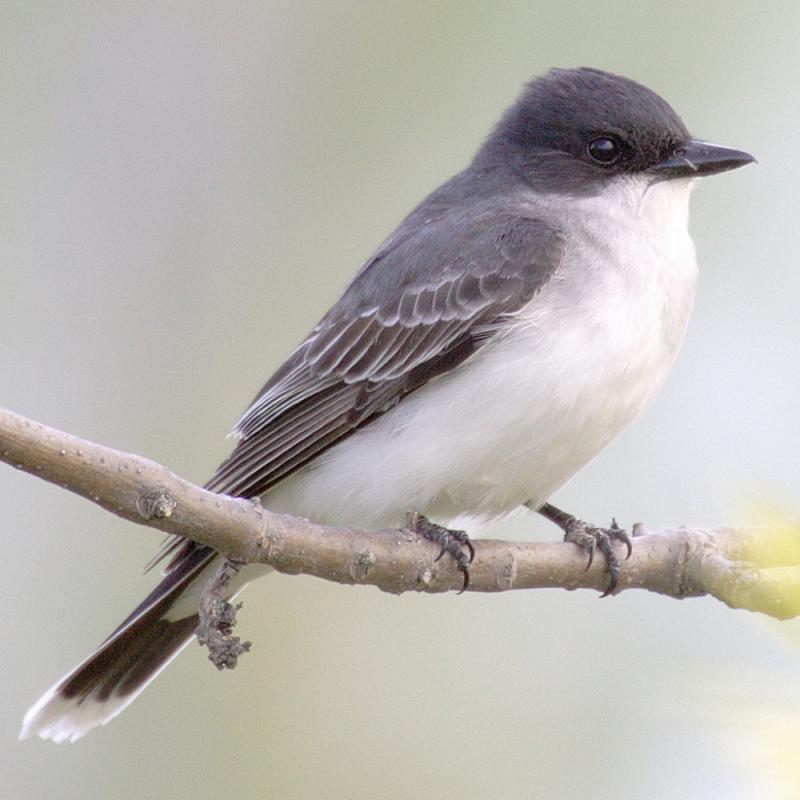Guide to Boreal Birds
Overview
The Eastern Kingbird perches on treetops, fences, and utility poles. When another bird flies into its territory--even one much larger than itself--it attacks fiercely, uttering a piercing cry. When one of a pair starts the battle, the other usually joins in. Its aggressive behavior has earned this bird its common name. In late summer and early fall they often flock, and large numbers pursue flying insects; they also feed on wild berries, which they deftly pluck while on the wing.
Description
8-9" (20-23 cm). Blackish head, blue-black mantle and wings; black tail with white terminal band; white below. Red feathers in middle of crown usually concealed. Long crown feathers and upright posture give it a distinctive silhouette.
Voice
A sharp dzee or dzeet. Also a series of harsh, rapid calls: kit and kitter.
Nesting
3-5 spotted white eggs in a large bulky nest consisting of heaps of twigs, straw, and twine lined with hair and rootlets; built on horizontal limb of a tree, often near water.
Habitat
Savannas, rangelands, forest edges, riverside groves, and even city parks and roadsides.
Range/Migration
The Eastern Kingbird is a conspicuous migrant, generally traveling by day in flocks of 10 to 60 individuals. The timing and rate of migration in spring coincide with the availability of fruit in Central America. Unlike most flycatchers, this species feeds primarily on fruit during both fall and spring migrations and during the winter. It is believed that most birds travel directly to the southern portion of the winter range (in central Brazil) until they find fruit-producing Yagrumo Macho trees. This tree is a pioneer species that favors disturbed sites and forest edges. Eastern Kingbirds lead a somewhat nomadic existence as they follow the fruiting of this species, gradually moving north into Central America. On their spring migration most birds follow the east coast of Mexico northward, then fan out across the eastern United States.
Breeds from British Columbia across interior Canada to Maritime Provinces and south to northern California, central Texas, Gulf Coast, and Florida. Winters in tropics.



